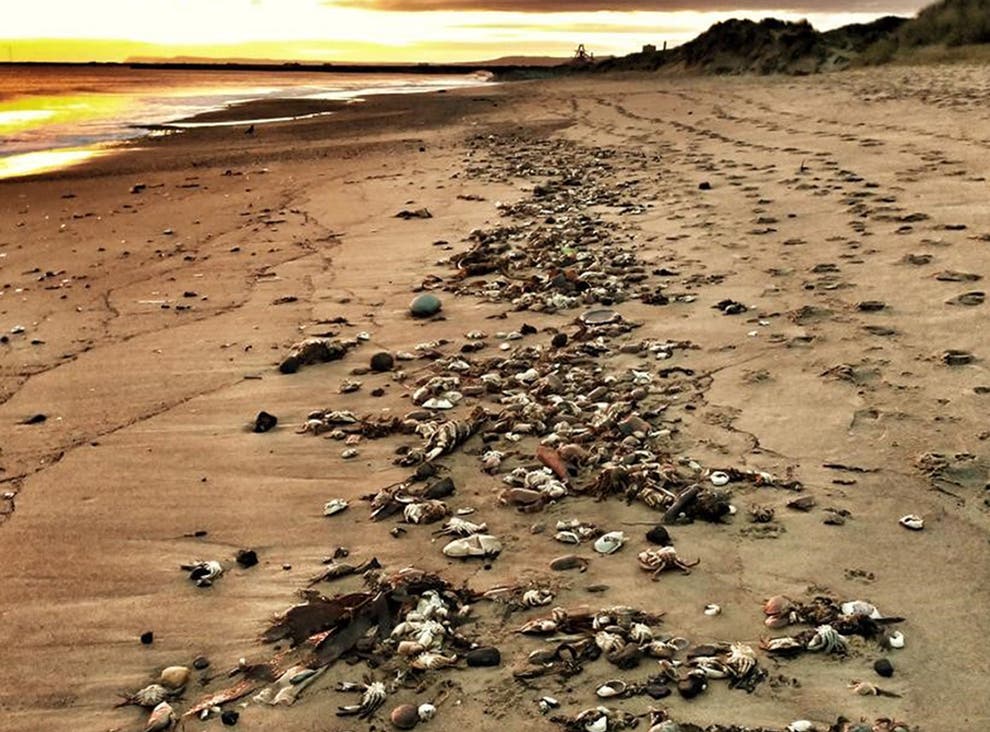Mystery of ‘apocalyptic’ mass crab deaths remains as investigators struggle to find cause
Tens of thousands of lifeless crustaceans washed up on North East beaches - and no-one knows why

Your support helps us to tell the story
From reproductive rights to climate change to Big Tech, The Independent is on the ground when the story is developing. Whether it's investigating the financials of Elon Musk's pro-Trump PAC or producing our latest documentary, 'The A Word', which shines a light on the American women fighting for reproductive rights, we know how important it is to parse out the facts from the messaging.
At such a critical moment in US history, we need reporters on the ground. Your donation allows us to keep sending journalists to speak to both sides of the story.
The Independent is trusted by Americans across the entire political spectrum. And unlike many other quality news outlets, we choose not to lock Americans out of our reporting and analysis with paywalls. We believe quality journalism should be available to everyone, paid for by those who can afford it.
Your support makes all the difference.It was a mystery as grim as it was puzzling: tens of thousands of crabs and lobsters found dead on beaches up and down the North East of England.
Now, two months after the mass die-off, the mystery remains.
An investigation by the Environment Agency has been unable to find what caused the episode, in which lifeless crabs were found piled along the coast.
Pollution, seismic activity and dredging have all been ruled out as explanations for the carnage, which continued for more than a week and stretched from Saltburn in North Yorkshire up to Seaham in County Durham.
A theory that new sub-sea power cables recently laid between Northumberland and western Norway may have played a part in the deaths has also been eliminated.
The investigation – which has drawn on experts from a range of bodies including the Centre for Environment, Fisheries and Aquaculture Science, the Marine Management Organisation and the UK Health Security Agency – had hoped to find solid conclusions by the end of the year.
It aimed to offer peace of mind to both the region’s shellfish industry and local people who were left hugely disturbed by the episode. One former MP Anna Turley described the scenes being witnessed on the beaches as “apocalyptic”.
But investigators will now turn their attention to looking for possible natural causes.
A spokesperson for the Environment Agency said there was now “no timeline” on when the investigation might finish but that work was continuing “as quickly as possible”.
In a previous statement, Sarah Jennings, operations manager for the government agency, said: “We’ve screened for over 1,000 potential chemical contaminants but found no anomalies that could lead to an event of this scale.”
And she added: “In a bid to better understand the scale of the incident, our survey vessel the Humber Guardian has taken samples from the seabed, which show that that only crabs and lobsters appear to be affected.
“By combining this evidence we have ruled out chemical pollution and sewage as likely causes, and the investigation will now focus more on whether disease or a natural event could have been responsible for the deaths.”

Join our commenting forum
Join thought-provoking conversations, follow other Independent readers and see their replies
0Comments